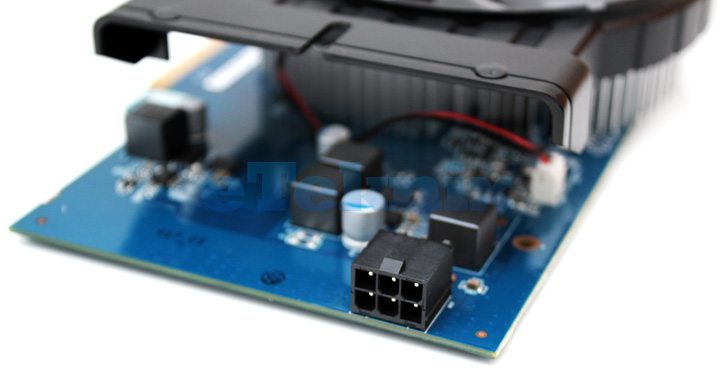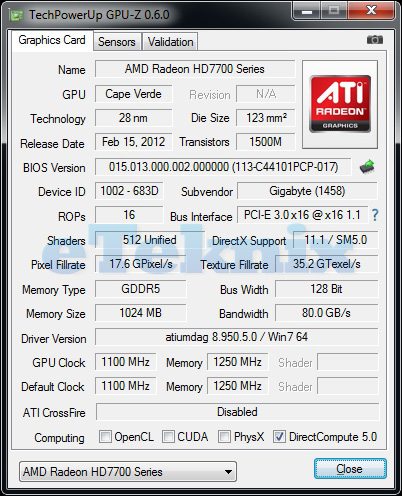Gigabyte Radeon HD 7770 OC 1GB Graphics Card Review
Andy Ruffell / 13 years ago
Gigabyte have opted to build this card from the ground up with a custom PCB that comes in slightly shorter than the reference stock card length. The card utilises Gigabyte’s famous Ultra Durable technology in terms of the components used, such as MOSFET’s, Chokes and the use of solid capacitors. The cooler covers 3/4’s of the card with a large black plastic shrouding which is only supported by the large fan and aluminium heatsink in the middle.

The card includes a large 100mm Gigabyte branded fan which sits over the large aluminium heatsink block. The block covers the GPU core and memory to provide the best assistance with cooling, and the large fan pushes hot air towards the rear of the card and exhausts it out of the rear I/O of the card, just by the display outputs.

The card, including cooler only take up two expansion slots in your case, but one thing that we wanted to comment on was the black, plastic fan cover and shrouding. Due to it being held on just in the centre, by the fan, it does seem to have a slightly flimsy element to it and could cause problems later down the line, so we just thought that we’d pre-warn our readers.

The card requires just one 6-pin PCI-Express connector, and due to the custom PCB layout, there is a lot of room around the connector for ease of installation. Sadly, Gigabyte don’t include a 4-pin Molex to 6-pin PCI-Express adapter that we see other brands bundling in for those who may not have the appropriate connectors on their power supply.

Moving down the card we find a single CrossFireX adapter for those wanting to run two of these cards together. If you haven’t already seen it, we do suggest that you read our HD 7770 CrossFire article that can be found here.

Though we have a custom PCB and custom cooler, the rear I/O is anything but custom with a reference design that incorporates a large amount of ventilation ports for exhausting heat and the usual display outputs that we’re familiar with on the HD 7770. Included is a dual-link DVI connector, HDMI port and two mini DisplayPort connectors which sadly Gigabyte don’t provide any adapters or converters with this card so hopefully your monitors include the right connectivity options that you need.

Taking a look at GPU-Z, we can see that the speed has been increased to 1100MHz on the GPU clock from its stock, reference speed of 1000MHz. The memory clock has also been increased from 1125MHz to 1250MHz so we’re hoping to see some good increases in performance.




















